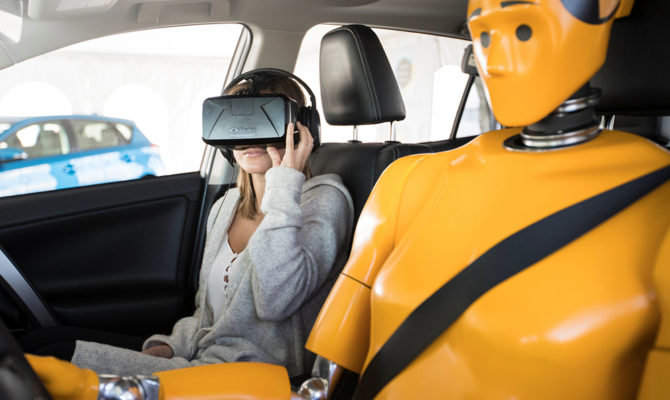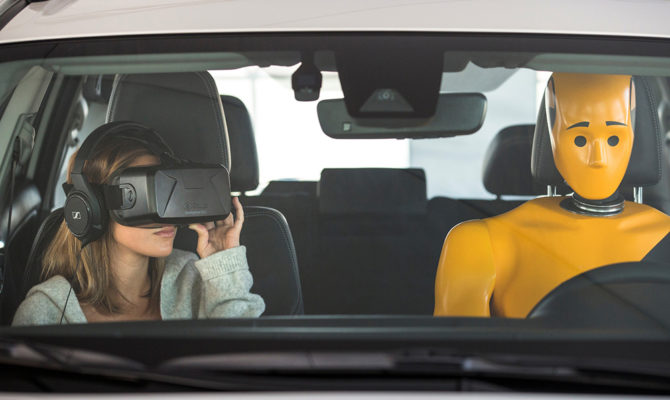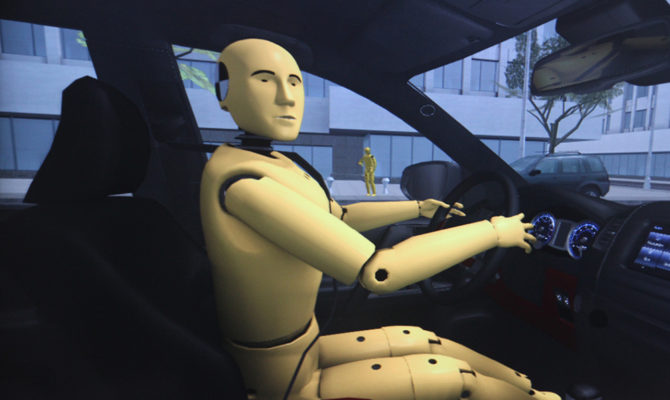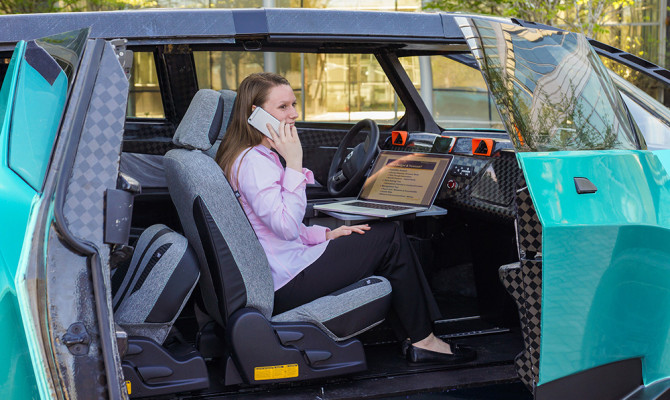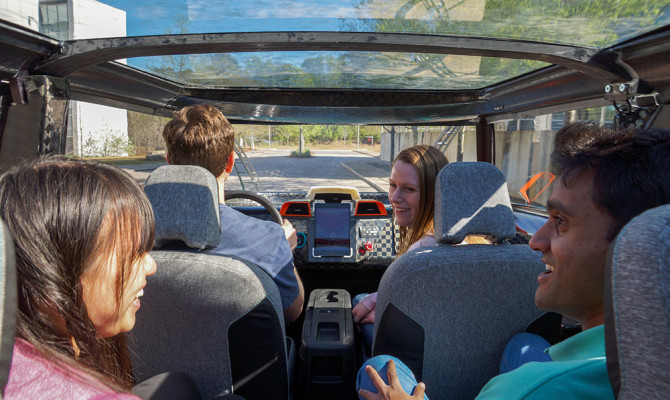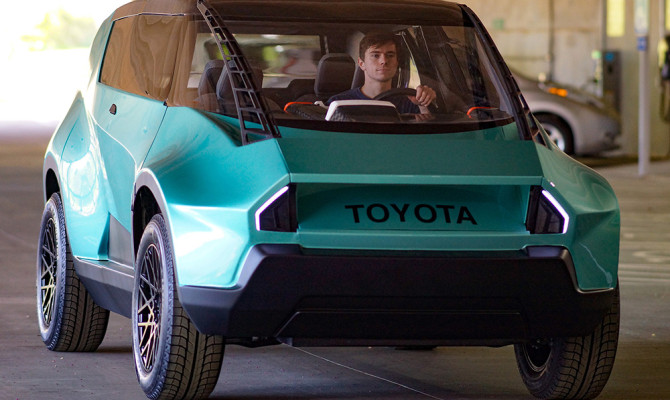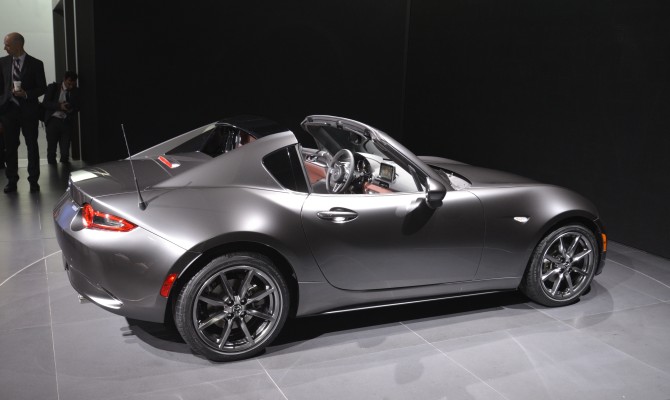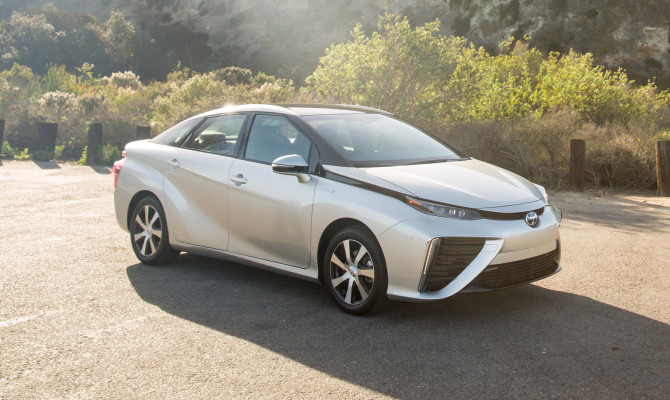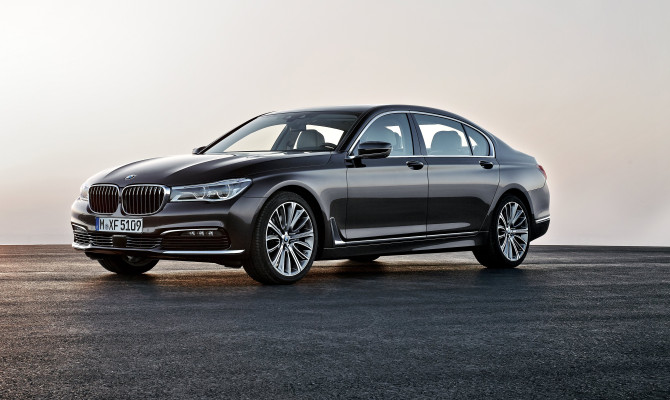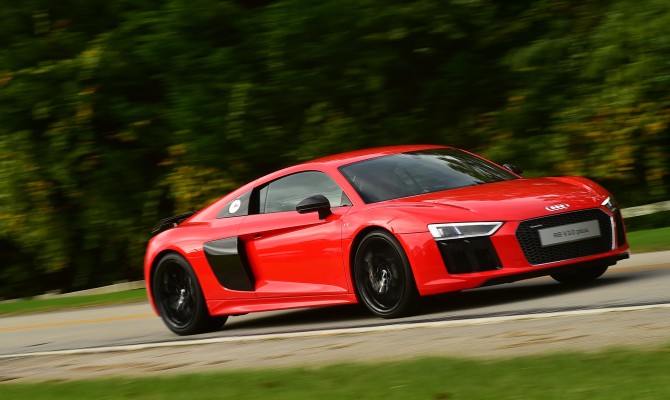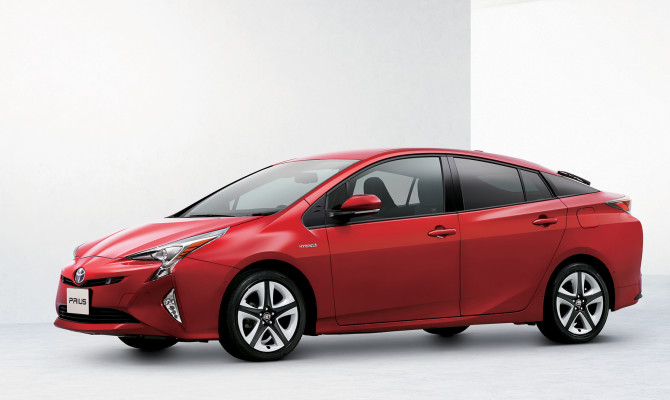Special to Driveway
PULL QUOTE: “There was a parade of new sport/crossover utes from virtually all manufacturers, all scrambling to get a share of this hot market segment.”
High-tech safety features that, not too long ago, were pricey options and only available on prestigious models, are now standard on two of Toyota’s most popular models.
Every 2017 Toyota Corolla and 2017 Toyota RAV4 comes with a Toyota Safety Sense (TSS) package and almost every new Toyota sold by the end of 2017 will come with this innovative safety package.
“Canadians will buy more than 150,000 vehicles equipped with Toyota Safety Sense over the next 12 months,” according to Stephen Beatty, Vice-President Toyota Canada Inc. at a driving demonstration event in Maple Ridge.
A Pre-Collision System, Automatic High Beam and Lane Departure Alert are all included in the base TSS bundle and there’s a TSS-P package that also adds Dynamic Radar Cruise Control and a pedestrian detection function.
Beatty did, however, emphasise that these clever active safety systems are designed to “enhance, not replace, driver control”. Due to cost savings gained through innovation and high volume production, he also estimated that TSS only added about $300 to the price of these 2017 models.
The Pre-Collision System (PCS) uses a camera and laser beam to detect a vehicle ahead. It first prompts the driver to take evasive action if a collision is looming, with an audio and visual alert. It can provide additional braking force using a Brake Assist feature and it will automatically apply the brakes (full force), if no action is taken by the driver. Obviously, road conditions and other factors can influence the outcome, however, a live demonstration in a RAV4 certainly proved how effective PCS can be.
The operational range (approximately 10 – 80 km/hour) of PCS covers speeds at which at least 80 per cent of rear-end collisions occur, according to Toyota. TSS-P enhances the speed range of PCS and adds a Pedestrian Detection feature by using a millimetre-wave radar upgrade in combination with a camera.
Lane Departure Alert (LDA) uses a camera to detect lane markings in front of the vehicle and the vehicle’s position on the road. The driver gets an audio and visual alert if the system determines that the vehicle is drifting from its intended lane. TSS-P enhances LDA by adding a Steering Assist function, which guides Corolla back into its lane, and adds Dynamic Radar Cruise Control.
Automatic High Beam (AHB) uses the windshield mounted camera (behind the rear-view mirror) to help detect headlights of oncoming vehicles and tail lights of preceding vehicles. It then automatically switches between high and low beams as appropriate to provide the most light possible and enhance forward visibility.
Could this be the dawn of a whole new generation of intelligent automobiles with active safety? Leading to a day when all vehicle-to-vehicle collisions are eliminated. That’s probably too far ahead to predict, but it’s certainly possible. Toyota did use an interesting, and futuristic, virtual reality (VR) demonstration to highlight the advantages of TSS.
It was my first experience of the very cool visual world of three-dimensional VR, which is created by using a headset connected to interactive software and hardware. You’re able to freely “look around” in an artificial world, which your body doesn’t inhabit … yeah, it’s a little weird. Apparently it will be part of Toyota’s auto show traveling display. If you get an opportunity, do check it out.
In the real world, we also got an opportunity to drive 2017 editions of the Corolla sedan and the new Corolla iM, with the TSS system. Yes, the iM is effectively a re-badged Scion model. That said, it’s also a cleverly designed hatchback with double-wishbone rear suspension, more standard equipment, extra support seating, plus a sportier feel and attitude.
There is indeed much that is right with the introduction of the Hybrid Synergy Drive to the RAV4 lineup.
(more…)
Most of Toyota’s North American vehicles are engineered in Southeast Michigan but its newest concept has its roots firmly planted in the red clay of South Carolina.
Designed, engineered and hand-built by graduate students at Clemson University’s International Center for Automotive Research (CU-ICAR), the vehicle is the result of a two-year collaboration with Toyota Motor North America designers and engineers. The result is an innovative, flexible concept called uBox that is intended to appeal to the next generation of car buyers: Gen-Z.
The CU-ICAR / Toyota collaboration, called Deep Orange, immerses students into every aspect of automotive development – from market research and design studies to engineering design and manufacturing.
“Deep Orange gives students’ hands-on experience with the entire vehicle development process, from identifying the market opportunity through the vehicle build,” says Johnell Brooks, an associate professor in Clemson’s graduate engineering program. “It’s like automotive boot camp for the real world, and it wouldn’t happen without industry partners like Toyota.”
The typical customer for uBox is a young entrepreneur who wants a vehicle that can provide utility and recreation on the weekend but that can also offer office space or other career-centric or lifestyle uses during the week.
The concept features a versatile interior that can be rearranged for various activities, from working or operating a business, to hauling bulky cargo. A low floor allows for reconfigurable, removable seats on sliding tracks that can be nested.
Vents, dashboard display bezels and door trim can be personalized and made with 3-D printing technology and an online community for owners where they can share design ideas.
It’s propelled by compact, dual-purpose, all-electric powertrain and provides emission-free stationary energy to power consumer electronics, power tools or other devices through various 110-volt sockets located throughout the interior and exterior.
One feature in particular caught the attention of Toyota Executive Program Manager Craig Payne, a unique pultrusion technique developed by the students that allows composite carbon fiber rails bonded with aluminum to support a curved glass roof.
“The roof pultrusion was something unexpected and very interesting when they first started talking about the concept,” said Payne. “The fact that they were able to achieve an industry-first manufacturing technique as students speaks volumes for this program.”
The all-new Mazda MX-5 has been named World Car of the Year making it a double win at the New York International Auto Show as the popular roadster scooped the top spot in the design category too.
Mazda, one of the smaller Japanese auto manufacturers, is no stranger to the World Car Awards program – now in its 12th year – winning the top car award once before and top three votes twice.
The Mazda2/Mazda Demio was the 2008 World Car of the Year. While the Mazda3 (2014), Mazda6 (2013) and Mazda MX-5 have all earned “Top Three in the World” status as voted by the 70 plus international automotive journalists that make up the jury.
The MX-5 was chosen from an initial entry list of 23 vehicles from all over the world, then a short list of ten, then three finalists: the Audi A4 Sedan/Audi A4 Avant, the Mazda MX-5, and the Mercedes-Benz GLC.
“What a wonderful honor, to have the Mazda MX-5 named World Car of the Year,” said Masahiro Moro, president and CEO, Mazda North American Operations. “As our iconic MX-5 roadster approaches one-million units of production, this award is proof that it is as young, vibrant, fun and relevant as ever.”
The World Car Awards jurors observed that, “With the launch of its all-new MX-5, Mazda has thrown out the blueprint and gone back to basics – back to 1989 basics. Shorter, lower, wider and – most importantly – lighter, the new MX-5 comes with a choice of either 1.5 or 2.0-litre naturally aspirated petrol engines.”
The announcement came hot on the heels of Mazda revealing its new retractable hardtop version of the model.
To be eligible for the overall World Car award, the candidates must become available for sale on at least two continents during the period beginning January 1, 2015 and ending May 31, 2016.
The BMW 7 Series was declared the 2016 World Luxury Car. BMW has won the World Green Car title two years in a row (2015 – BMW i8; 2014 – BMW i3) and in 2008 for the BMW 118d with Efficient Dynamics. In 2006, the BMW 3-Series was the World Car of the Year while in 2014, the BMW i3 won World Car Design of the Year.
This year’s winner was chosen from an initial entry list of eight prestigious cars from all over the world, then a short list of three finalists: the winner as well as the Audi Q7 and the Volvo XC 90.
The Audi R8 Coupe was declared the 2016 World Performance Car . . . again. R8 variants won the same award in 2010 and 2008, adding the design award in the latter year.
The Toyota MIRAI hydrogen fuel cell car won the 2016 World Green Car Award.
“Just as Prius changed the world nearly 20 years ago, the hydrogen-powered Mirai is ready to make history,” said Bill Fay, group vice president and general manager, Toyota Division. “With a range of over 300 miles per tank, a refueling time of under five minutes, and emissions that consist only of water vapor, Mirai is leading the world forward toward a more sustainable future.”
The MIRAI was chosen from an initial entry list of eight new vehicles from all over the world, then a short list of three finalists that included the winner as well as the Chevrolet Volt and the Toyota Prius Hybrid.
The Toyota Prius (2010) has previously earned “Top Three in the World” status for both the World Green Car and the overall World Car of the Year categories.
In addition, the Toyota GT86 was a “Top Three in the World” finalist for World Car of the Year in 2013; the Toyota iQ in 2009 for the same category; and the Toyota Harrier Hybrid in 2006 for World Green Car.
C-HR Concept is perfect vehicle for ‘yuccies’ – the young urban creatives who inspired the design.
(more…)
Lexus ES is the most dependable premium model overall, reporting the lowest average number of problems
No surprise the 4th generation is a hybrid but that fact undersells its other attributes.
“More than nine million gas-electric hybrid cars are now in service globally – Toyota-made vehicles account for eight million of them.”
Toyota believes the fourth generation Prius is destined to break into new markets with what it describes as ground breaking environmental performance, technological advances and a new design.
More than nine million gas-electric hybrid cars are now in service globally – Toyota-made vehicles account for eight million of them and the Prius makes up half of Toyota’s total.
Environmental performance alone is no longer enough to make a car stand out in a now-crowded segment, so Toyota rebuilt the Prius from the ground up. The result is a sleeker, sportier form, refined interior, advanced safety functions and promised sportier drive.
Some noteworthy improvements can be found in the seating. In order to minimize discomfort during long drives, front seats feature improved frames and cushion bolstering which provides a ‘snug’ fit and chiropractic control. The seatback springs have been moved rearward for optimal occupant posture and, as a result, pressure on the lower part of the pelvis is reduced and dissipated broadly, thereby alleviating stress on the lower back and muscles. The cushioning in the rear seats has also been optimized, with the seating area widened to mirror the improved comfort of the front seats.
The Prius retains its 1.8-litre VVT-i equipped Atkinson cycle gas engine but it has been completely re-engineered. More details will be released soon.
The all-new Prius will go on display from next week at the Tokyo Motor Show and goes on sale in Japan in December. Global launch dates should follow shortly after.
Recent Comments
- { Enjoyed your Forest of Bowland in the BMW X5M, particularly the photo of the BMW in front of the main part of Stonyhurst College where... }
- { Bantam designed the Jeep, not Willy's or Ford. The American military gave the original Bantam prototype to Willys and Ford to copy. There is plenty... }
- { All Escalades come with a 6.2-lilter V8 engine that produces 420 horsepower. A six-speed automatic is the only transmission offered and drives the rear wheels.... }
- { Alexandra is an excellent journalist. }
Popular Posts
- Journey to a ‘Sparkling’ Luxury Okanagan Resort “Four lucky readers will put a Dodge Journey’s weekend-...
- The Need For Speed: Hike Those Highway Limits More than half of those polled believe the province sho...
- Drives-U-Crazy… Erratic drivers. An early morning drive from Kelowna to Vancouver is nor...
- Readers Respond: The Pros and Cons of Increasing B.C. Speed Limits Increasing the speed limits will only increase risk to...
- Honda CR-V Review: The Compact Crossover To Get Things Done The CRV is a very stylish and aerodynamic crossover veh...


